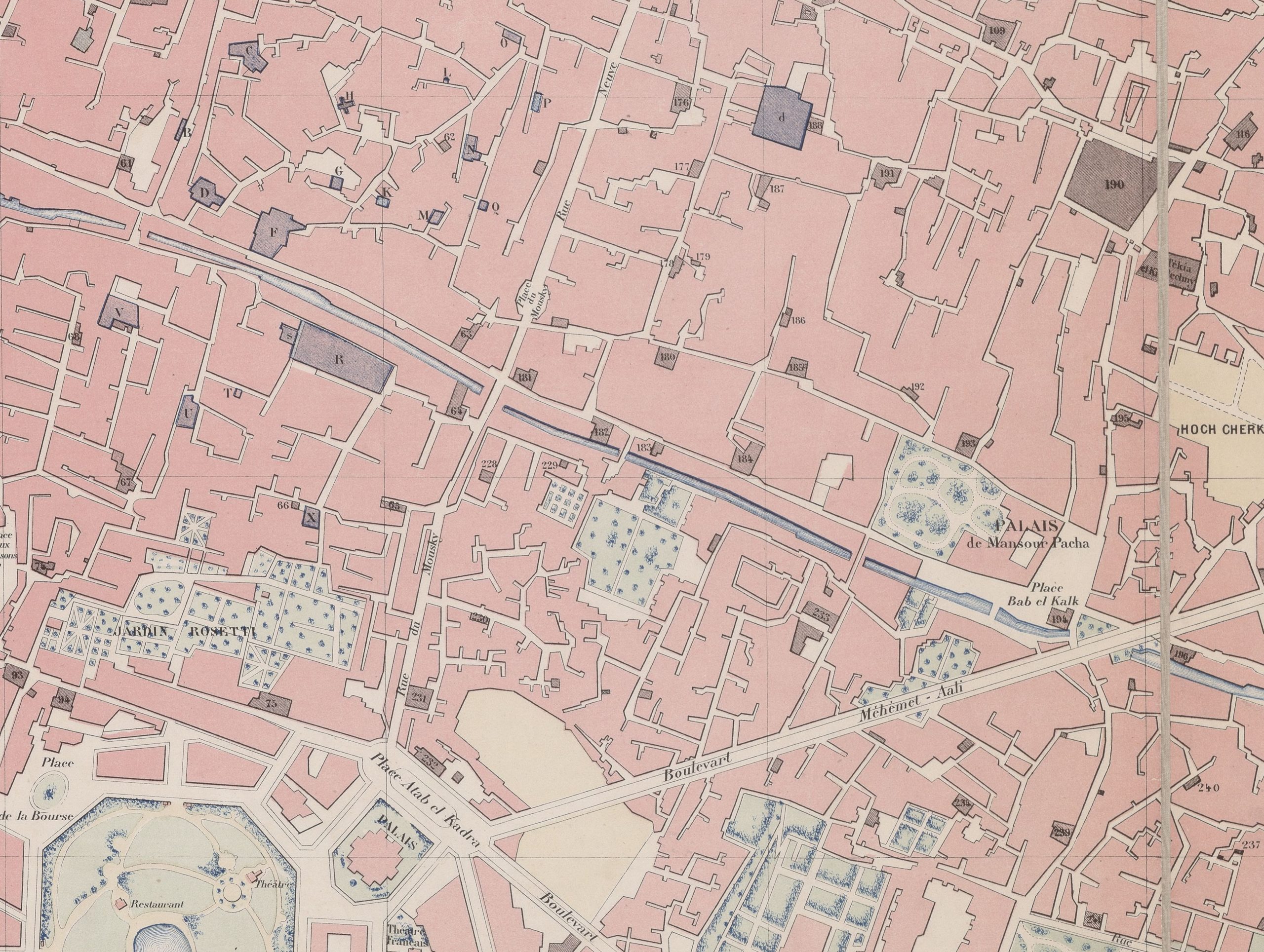This picture shows the entrance of the quarter of Muski in the mid-nineteenth century. This district was one of the main arteries of urban business; in the eighteenth century it was already a center of commerce, where European goods (armors, etc) could be bought. Originally there was a qanṭarat al-mūskī , that the French army destroyed together with houses and the shops in 1800 (al-Jabartī, 1215AH) to widen the streets and create what the chronicler al-Jabartī called ḥārat al-ifranj. After the Ottomans recovered Egypt, there became even more shops in Muski: textile shops, clothing, book stores, and printing presses; and of course, hotels and cafes.
Here it is from the map of Grand Bey:
The picture below shows the boom of Muski as a shopping and education district in 1909. By the 1900s, the district became even more popular among non-Muslim small merchants; from the 1880s there were many schools, among them French and Italian schools. There were pharmacists, doctors, and furniture shops and jewelers for the elite.
A typical ad from Annuaire égyptien administratif et commercial (Le Caire, 1891), p. 136.
Works cited:
Al-Jabartī, ʿAjāʾib al-Āthār.
Cairo: 1001 Years of the City Victorious. E-book, Princeton, N.J.: Princeton University Press, 1971.
Annuaire égyptien administratif et commercial. Le Caire, 1891.
(A.M.)




Comments are closed, but trackbacks and pingbacks are open.